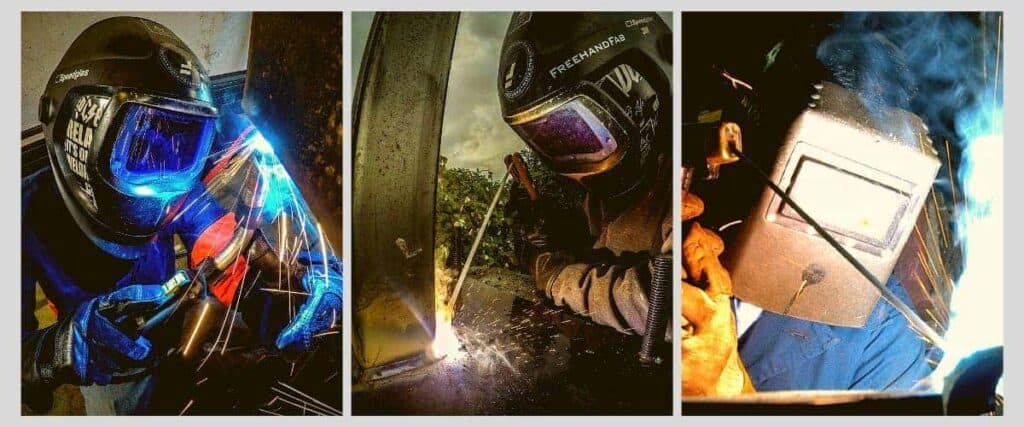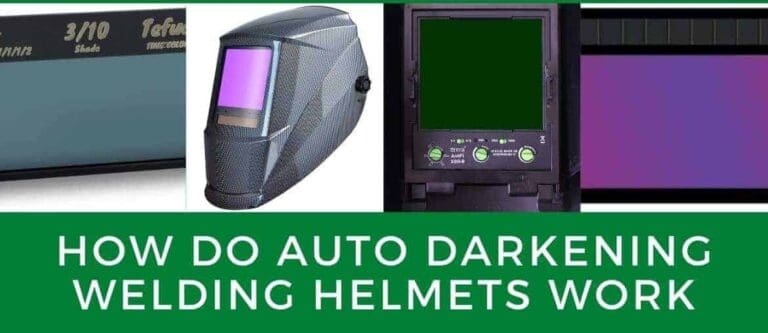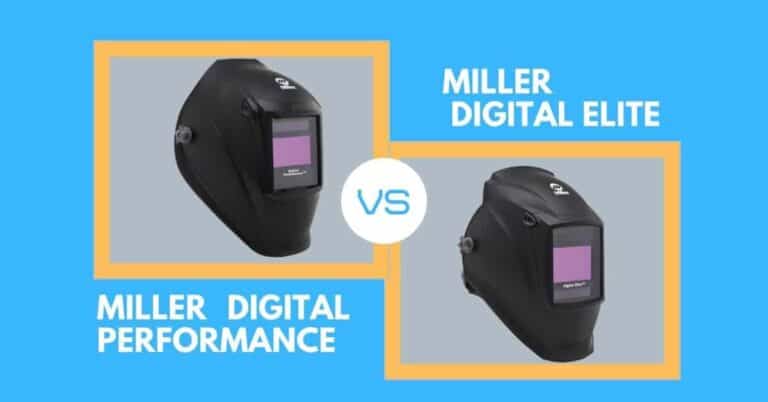Disclosure: As an Amazon Associate We earn from qualifying purchases.

As science, technology, and innovation transform almost all fields affecting humanity, welding is not left behind. In this article, you will learn in-depth welding practices, the revolution from ancient welding methods to modern micro welding techniques, tools and equipment notwithstanding the current welding methodologies, enjoy your reading!
What Is Welding?
Welding is the way of fusing two or more pieces of metals or thermoplastics together to make structures. The common processes involved are brazing, soldering, use of extreme heat, and gases.
Therefore, it is necessary for you to take precautions like wearing welding helmet, gloves etc. There are many types of welding helmet out there in market. Choose the right one before welding.
Different Kinds Of Welding Method
There are four common methods used in welding.
Metal Inter Gas (MIG) Welding
In the first case, this is the most common method of welding. Here, an electric power source connects with a shielded gas and a wire electrode and used to heat up the metals to be united. For a MIG welding helmet, you must read our review on Lincoln Electric Viking 3350.
Arc Welding
This is the most basic type, in terms of welding method where an electric current connects a welding stick to form an electric arc between the metals to be combined. Whereas, the method is most common with iron and steel.
Gas Tungsten Arc Welding
In this method, a tungsten electrode heats a base metal to create a weld puddle thus creating an autonomous weld. On the contrary, this process is quite complex and needs the expertise to handle.
Flux-Cored Arc Welding
This type of welding makes use of a special tubular wire filled which is filled with flux; albeit, the welders do not always require the shielding gas. Hereby, it’s the easiest process to learn and inexpensive.
What Is Micro Welding?
There isn’t a standard definition, but we sometimes refer this as precision welding. It’s a process of welding small and delicate components.
These type of welding uses a set of different technologies in a highly controlled environment where the surrounding shouldn’t affect and it’s mostly done under a microscope.
The process makes use of the this equipment which we have discussed below. In this article, we’ll focus on this but before we proceed further, let’s study the welding types.
The Types Of Micro-Welding
There are four major types of micro-welding; their application depends on the sensitivity, nature of the surface to be welded, and the level of manipulation of the welding equipment needed. Below is the list.
- Micro laser.
- Micro Arc.
- Flash.
- Resistance.
Applications
The science behind these type of welding has transformed many processes and brought convenience to many companies and businesses. There are many businesses providing the services, below are some areas where it’s applied, among others.
- Dentistry
- Art
- Medical
- Jewelry
- Biotechnology
- Automotive
- Electronics
- Aerospace
- Photovoltaic
The History Of Micro-Welding

We can trace welding back to the ancient history, during the bronze, iron ages, and middle ages where blacksmiths practiced welding. The welding methods have evolved over the generations from the ancient welding methods to the most recent high tech methods.
Most Popular Welding Of The Classics
During the 1800s, we discovered and developed gas welding and cutting, whereas, carbon arc welding and metal arc welding were the most popular. A Russan, Nikolai N. Benardos and his friend Stanislaus Olszewsk obtained the British and American patent for welding in 1885 and 1887 respectively; this marked the beginning of carbon arc welding.
The Emergence Of The Welding
C.L. Coffin of Detroit was awarded an American patent for the metal electrode in 1890. In the 1900s, Strohmenger announced a covered metal electrode in Britain while Oscar Kjellberg introduced it in Sweden. These led to the emergence of resistant welding procedures like seam welding, spot welding, projection welding, and flash butt welding. Elihu Thompson went ahead and introduced resistance welding. Gas welding and cutting are also believed to have emerged approximately in the year 1900.
After World War 1, Comfort Avery Adams led the Wartime Welding Committee of the Emergency Fleet Corporation which gave birth to the invention of alternating current by C.J. Holslag in 1919.
In 1920, P.O. Nobel of the General Electric Company invented an automatic welding technique. In the year 1920, a lot of research was done on welding which gave rise to the atomic hydrogen welding process which was later used up to 1940s.
After that in 1930, the New York Navy Yard developed stud welding which was patented to Robinoff, but Robinoff sold it later to Linde Air Products Company who renamed it Unionmelt welding; it’s a popular process even today.
In 1920, H.M.Hobart used helium for shielding but P.K. Devers used Argon making it easier to weld stainless and aluminum surfaces. In 1941, it was patented to Meredith who named it Heliarc welding and licensed to Linde Air Products. In 1948, the Air Reduction Company sponsored Battelle Memorial Institute to develop the gas metal arc welding.
Lyubavskii and Novoshilov publicized the use of welding with non-preserved electrodes in a carbon dioxide environment in 1953.
In 1961, the Arcos Corporation introduced a welding technique called Electrogas. Plasma arc welding was invented in 1957, the inventions kept surfacing with time until the recent invention of friction and laser welding.
How Modern Technology Affects It
With the invention of laser technology, the discovery of electron beans and ultrasound, we discovered that welding can be done on thin and delicate materials. Therefore, we use minimal energy in a highly controlled environment. Also, micro-welding equipment with very high precision was invented to weld exact spots without altering the surrounding. This gave birth to the below types on micro-welding tools.
Micro-Welding Equipment
As alluded earlier, accuracy and precision are fundamental in micro-welding. Laser technology offers a variety of micro laser segments with the following traits.
- A computer-based control system
- A high degree of pinpoint accuracy
- A compacted and portable equipment parts
There are several types and brands of tools in the market, but depending on usage and preferences, select the desired tool to meet your requirements.
What Is Micro TIG Welding?
The normal Micro TIG Welding is widely used for stainless steel, aluminum alloys, titanium alloys, and steel alloys. It’s most common for repair and maintenance purposes. It makes use of the shielding gas, a tungsten electrode, filler metal, and torch. Such type of Welding has a lot of resemblance to the normal TIG Welding except the fact that it uses magnification and optics to obtain a precise weld.
Advantages Of The Microscopic TIG
- It’ has a lot of manipulation options making its use and repair cost effective
- It operates on a higher speed than the laser Micro-welding tool
- It creates a deeper sink then the laser Micro-welding tool
Disadvantages of The Microscopic TIG
- Produces more heat than the laser one, not suitable for heat sensitive regions
- The surface to be welded must be heated prior and heating is needed during welding; this causes distortion of components
What Is Micro Laser Welding?
It uses light energy to quickly heat the weld area and the filler rod creates a weld. The nature of the weld created depends on the light beam size, the voltage applied, the width of the pulse and the span intervals that the light energy is focused.
We, in general, use four lasers for this matter; each type offers a unique outcome applicable for specific surfaces, below is the list.
- Pulsed neodymium-doped yttrium aluminum garnet (Nd:YAG)
- Continuous wave (CW) fiber
- Quasi-continuous wave (QCW) fiber
- Nanosecond fiber.
Advantages Of Microscopic Laser Equipment
- They produce a very low heat during welding hence best suited for heat-sensitive places and polished surfaces.
- Also, they don’t go deep into the cavitation regions and produce almost no sink allowing undetectable weld.
Disadvantages Of Microscopic Laser Equipment
- Laser micro-welding takes long and therefore expensive
- Since the laser head is fixed & must be used with a microscope to identify the target area, manipulating the work-piece is somewhat expensive.
How To Choose The Equipments
As alluded, there are several types and brands of these welders, this necessitates a selection criterion. If you’re buying for business purposes, a good selection will lead to a higher income but if your purchase is for personal use, a good choice will reduce the cost of repair. Below are the things to consider before you make a purchase.
- The kind of welding you intend to carry out as well as the nature of the surface to be welded. We used different tools for different welding methods and surfaces.
- You need patience, as, learning the welding processes is quite complicated. While, some of the processes above-listed can be complicated; however, if you question to your patience and competency, you’d rather opt for simple and quick welding techniques.
- Affordability is another factor to consider. The size of your purse limits you to a specific range of micro-welding tools.
- You should also consider the frequency and duration you intend to use your equipment. Some people opt to purchase a tool to help handle the current need as well as for future purposes
After selecting and purchasing your equipment, the choice of your welder will determine the level of expertise services you will get and the lifespan of your equipment. We strongly recommend that you thoroughly scrutinize your welder and interview before you engage.
Electron Beam Micro-Welding
This is yet another technique where a high-velocity beam of electrons is directed to the surface to be welded. On hitting the surface, the kinetic energy from these electrons produces sufficient energy to melt the surface creating a weld. To prevent the electron beams from scattering, we often perform this process in a vacuum. This process, however, cannot weld metals with a high melting point and vapor pressure like cadmium, zinc, and magnesium. The equipment and tools used in electron beam include:
- Electron gun which produces the electron beam
- A vacuum chamber which is the environment for the process
- A work-piece manipulator which helps in positioning the material to be welded
Not many welders will encounter this type of welding because it’s principally for industrial use.
Advantages Of Electron Beam
- Electron Beam Welding produces deep welds up to 300mm
- Hence, it welds refractory and dissimilar metals which other methods of welding cannot
- Since it’s done in a vacuum, it eliminates the possibility of impurities
- It has a narrower weld and heat affected zone
- Does not make use of filler metals
Disadvantages Of Electron Beam
- The equipment used is very expensive
- Preparation for the weld is also expensive
- The x-ray produced during welding can be harmful if not well controlled
- Space constraints in the vacuum chamber leading to time loss
- The process of rapid solidification can potentially cause a crack on the material being welded
Application Of Electron Beam
The following are the areas where beam techniques find use, just to mention a few.
- Aerospace
- Semiconductor
- Defense
- Medical
- Nuclear
- Automotive
- Power Generation
- Oil & Gas
This type welding is another phenomenon that has shocked many, you have more options to choose from, exercise diligence.
Wrap Up!
For instance, anybody, looking for micro welding services will certainly find this article very informative and sufficient guide to selecting the top micro-welding services and equipment. Based on the guidance provided herein, your needs, and preferences, you are best placed to benefit from the awesome modern technology in welding.
Furthermore, in as much as we don’t have the capacity to identify your requirements and circumstances unless you update us, we are certain that by the fact that you have read this article to this line, you are right placed to make a decision.


![5 Antra Welding Helmet Reviews By Experts In [2023] % 5 Antra Welding Helmet Reviews By Experts In [2023]](https://helmetshops.com/wp-content/uploads/2019/11/antra-welding-helmet-reviews-768x514.jpg)


